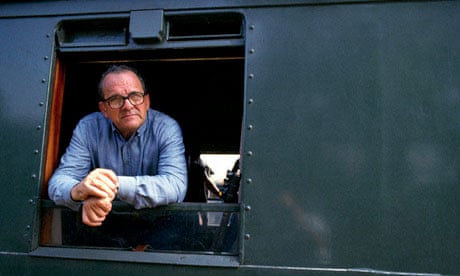Damiano Damiani, who has died aged 90, was a director of Italian popular films and television. He was best known for La Piovra (The Octopus, 1984), an internationally successful TV series about the mafia, and made several mafia-themed films and TV movies, but his range was much wider.
Born in Pordenone, north-east Italy, he began his career in the 1940s, working in the art department and directing documentaries. As popular Italian cinema boomed in the 1960s, he began to make personal pictures, westerns, comedies, political thrillers and horror films. If you have only seen Amityville II: The Possession (1982), his one American movie, you have seen Damiani at his least inspired. In that film, the camera followed potential victims around a haunted house in a style made tedious four years earlier by John Carpenter's Halloween. According to the New York Times review, Damiani managed "to make sensation, blood, sex and suspense become a monotonous way of life".
Making sensation- and suspense-filled genre pictures was Damiani's way of life. When the scripts were bad, the resulting films could indeed be monotonous. But when they were good, the films could be extraordinary – as in the case of A Bullet for the General (known as Quien Sabe? in Italy and Spain), his first western. It was made in 1966 at the beginning of the golden age of Italian westerns: Sergio Leone's The Good, the Bad and the Ugly, Sergio Corbucci's Django and Sergio Sollima's The Big Gundown were all shot that year.
A Bullet for the General is the story of a mysterious American, seemingly adrift in revolutionary Mexico, who falls in love with a social bandit, El Chuncho. The screenplay was co-authored by Franco Solinas (The Battle of Algiers). Like many Italian film-makers of the time, Solinas was a leftist and believed that film – not just art film, but popular, commercial cinema – demanded storytelling which would radicalise the viewer, and encourage social change. Damiani clearly agreed, and together the two men created a subgenre: the tortilla western, set south of the border, where revolutionary Mexicans form uneasy alliances with interventionist gringos against their respective governments.
In A Bullet for the General, Bill Tate, the mysterious American, turns out to be a paid assassin, hired by the authorities to murder a revolutionary general. There are many twists and turns to the narrative, all vividly realised by Damiani. At one point a trainload of government soldiers is trapped in a canyon, unable to proceed, because one of the officers has been kidnapped and crucified on the tracks up ahead. Ennio Morricone provided a thrilling score, and the art direction seems particularly authentic – down to the wicker coffins of dead children in a Native American village. Did Sam Peckinpah see Damiani's film before he made The Wild Bunch (1969)? It shares location, theme (love and betrayal among men) and visual aspect. Solinas wrote similar scripts for Corbucci (A Professional Gun, 1968), Giulio Petroni (Tepepa, 1969) and Gillo Pontecorvo (Queimada, aka Burn!, 1969).
These were but a few of the tortillas that flourished in the wake of Damiani's western. However, he seems to have resisted invitations to return to the dusty trail – at least until 1975, when he was contacted by Leone who, stung by the unfavourable reaction to his own tortilla western, Duck, You Sucker (1971), had retired from directing. Instead, he was "producing" – which involved hiring a former assistant as the director, and then turning up on set. This had worked well on My Name Is Nobody (1973), his visually stunning collaboration with Tonino Valerii, who had worked as assistant director on most of Leone's films and knew exactly what his producer wanted. But the chemistry was less successful when Leone invited Damiani to direct a quasi-sequel to that film.
This was a treatment mysteriously titled A Genius, Two Friends and an Idiot, written by Ernesto Gastaldi and Fulvio Morsella. Damiani worked with both men on the script, and shared the writing credit. Despite being a vehicle for the comic actor Terence Hill, the project seemed to have plenty going for it. The supporting cast included Patrick McGoohan, Miou-Miou and Klaus Kinski. Large portions were shot in Monument Valley, and on sets built for Leone's Once Upon a Time in the West (1968). Yet the film dragged in the cinema and floundered at the box office – so badly that Leone claimed he had nothing to do with it, and had never visited the set. Press photographs of Damiani and Leone, standing on the railroad tracks in Monument Valley, revealed otherwise.
Highly regarded as the director of one of the best Italian westerns of all time and simultaneously blamed for one of the worst of them, Damiani took it all in his stride. He remained a working director – mainly in Italian films and television – for three decades. As the actor Franco Nero said: "A producer could count on him. If a film was supposed to be shot in nine weeks, he could do it in eight. As an actor, you felt safe with him." Damiani shot his last film, a comedy about hitmen on holiday, at the age of 80.

Comments (…)
Sign in or create your Guardian account to join the discussion